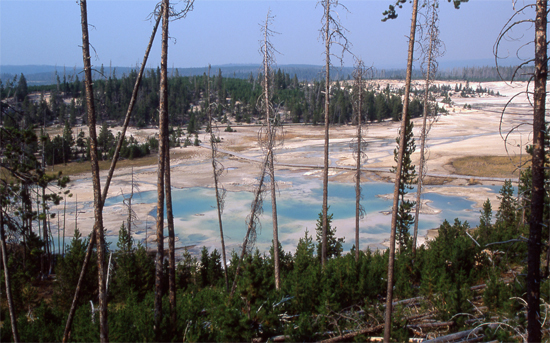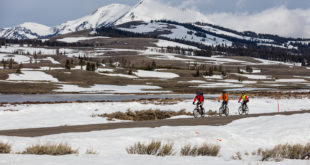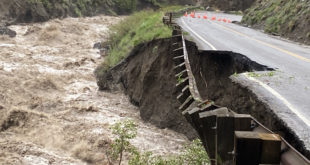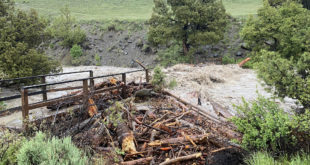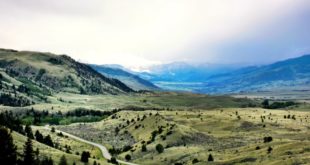The network, operated by the U.S. Geological Survey, began automatically transmitting temperature measurements from geysers and hot springs in the park’s Norris Geyser Basin this month.
Ten new, radio-equipped sensors were installed at different spots within the geyser basin, recording temperatures within runoff channels from geysers, hot pools, soils, and even air. The data are saved by the sensors and are then transmitted daily via small radios and the Internet back to the USGS offices in Menlo Park, Cal. where they are archived, plotted and distributed to the public on the Yellowstone Volcano Observatory website.
Data gathered by the new sensors will be accessible within 24 hours of measurement, allowing for rapid assessment of changing conditions. When necessary, the equipment can be queried and the measurements read by YVO scientists in real-time.
The information will help scientists track temperature changes in local streams that might correlate with seismic tremors, and help Park officials keep an eye on thermal features for educational and safety purposes.
“This innovative use of new technology will allow the public, park staff, educators, and scientists to observe temperature variations in Norris Geyser Basin, one of Yellowstone’s more dynamic geyser basins,” said Henry Heasler, YNP Geologist.
Yellowstone’s existing temperature sensors, which have been operational about eight years, lack the ability to transmit, making it necessary to visit sensors to retrieve their data.
The project required unique equipment not readily available. The radios had to be small, with unobtrusive antennas so that the equipment could be placed beneath boardwalks and within small rock piles. The radio signal had to be strong enough so that a day’s worth of temperature data could be sent nightly to a base station up to half-a-mile away, and the equipment had to be able to withstand acid waters, steam, and sub-freezing temperatures during Yellowstone’s notorious winters.
“We’ve tried to make the system as robust as possible,” said Jake Lowenstern, the scientist in charge of YVO. “If an antenna fails, the loggers should be able to keep recording and hold on to their data for about a month, and then send all their information once we get out to fix the equipment.”
The equipment was purchased from Marathon Products, Inc. of San Leandro, Calif, with funds provided by the American Recovery and Reinvestment Act. Typically, the company’s sensors are installed in refrigerated trucks and warehouses monitoring food and other perishable commodities that require controlled environments.
The temperature-sensor network is part of increased monitoring of Yellowstone by the USGS and its YVO partners at the University of Utah and Yellowstone National Park. This summer the observatory also upgraded seismic equipment, installed a mobile webcam, and deployed water-sampling equipment in rivers around the Park.
Image courtesy of National Park Service.
We’ve also set up a free Twitter account so you can receive updates on the device of your choice.
 Yellowstone Insider Your Complete Guide to America's First National Park
Yellowstone Insider Your Complete Guide to America's First National Park
